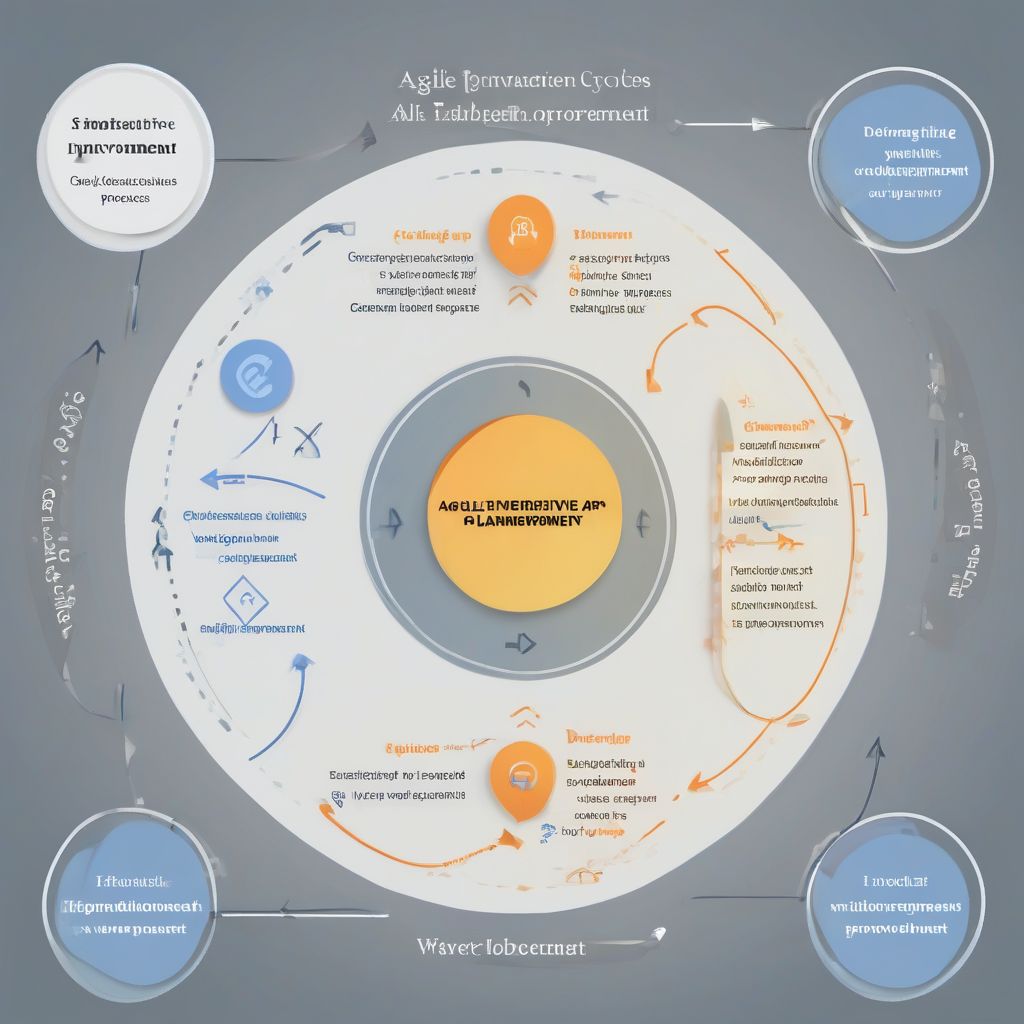Imagine this: you’re on a thrilling rollercoaster ride, except this isn’t just any ride, it’s the development of your dream app. Now, you have two choices: the traditional, slow-moving carousel, or the agile, exhilarating rollercoaster that promises a faster, more flexible, and ultimately, more successful journey.
For those seeking to build apps that thrive in today’s dynamic digital landscape, the choice is clear: Agile methodologies are the way to go.
Understanding Agile Methodologies
Unlike traditional waterfall methods, which follow a linear path, Agile is all about embracing change and delivering value incrementally. It’s about breaking down your app development process into smaller, more manageable chunks called “sprints.” Each sprint focuses on developing a specific set of features, followed by testing and feedback, allowing for course correction and continuous improvement.
Key Benefits of Using Agile for App Development
Why is Agile causing such a stir in the app development world? Let’s break down the compelling benefits:
1. Enhanced Flexibility and Adaptability: In the fast-paced world of app development, being able to adjust to new information or market trends is critical. Agile methodologies empower you to pivot and adapt on the fly, ensuring your app stays relevant and competitive.
2. Improved Collaboration and Communication: Agile thrives on open communication and collaboration between development teams, stakeholders, and even end-users. This transparency leads to better decision-making, quicker problem-solving, and a stronger sense of shared ownership.
3. Higher Quality Product: By incorporating testing throughout the development lifecycle, Agile helps identify and address bugs early on, resulting in a higher quality final product.
4. Faster Time-to-Market: Agile’s iterative approach allows for quicker releases of functional app versions, getting your product into the hands of users faster and allowing you to gather valuable feedback for future iterations.
5. Reduced Risks: The incremental nature of Agile means that risks are identified and addressed early, preventing costly overruns and ensuring a smoother development process.
 Agile App Development Process
Agile App Development Process
Key Agile Methodologies
Agile is an umbrella term encompassing various frameworks, each with its own set of principles and practices. Here are two of the most popular methodologies used in app development:
1. Scrum: Scrum is characterized by its structured framework and clearly defined roles, making it an excellent choice for larger teams and complex projects.
2. Kanban: Kanban is a more flexible approach that visualizes workflow and limits work-in-progress, fostering efficiency and continuous delivery.
How to Implement Agile in Your App Development Process
Ready to embrace the Agile revolution? Here’s a step-by-step guide to get you started:
1. Define Your Project Vision and Goals: What are you hoping to achieve with your app? Clearly outline your objectives, target audience, and key features.
2. Build Your Agile Team: Assemble a team of skilled individuals with diverse expertise and a shared commitment to Agile principles.
3. Choose Your Agile Framework: Select the framework (Scrum, Kanban, or a hybrid) that best aligns with your project needs and team structure.
4. Break Down Your Project (Create Your Backlog): Divide your project into smaller, manageable tasks called user stories and prioritize them in a product backlog.
5. Sprint Planning and Execution: Plan and execute your development in short, time-boxed iterations called sprints, focusing on delivering working features at the end of each sprint.
6. Embrace Regular Testing and Feedback: Integrate testing throughout the development lifecycle and gather feedback from stakeholders and users to ensure you’re on the right track.
7. Continuous Improvement (Sprint Retrospectives): At the end of each sprint, conduct retrospectives to reflect on what worked well and what could be improved, fostering a culture of continuous learning and optimization.
Overcoming Common Challenges in Agile App Development
While Agile offers a wealth of benefits, it’s not without its challenges. Here are a few common hurdles and how to overcome them:
1. Resistance to Change: Transitioning to an Agile mindset requires a cultural shift. Provide training and support to help your team embrace new ways of working.
2. Communication Barriers: Foster open and transparent communication channels to ensure everyone is on the same page.
3. Scope Creep: Clearly define project scope and manage expectations to avoid feature creep and maintain focus.
Conclusion
In today’s rapidly evolving digital landscape, embracing Agile methodologies is no longer optional; it’s essential for app development success. By fostering flexibility, collaboration, and continuous improvement, Agile empowers you to build high-quality apps that meet user needs and adapt to market demands. Are you ready to embark on your Agile journey?
We’d love to hear about your experiences with Agile app development. Share your thoughts and questions in the comments below!
[amazon bestseller=”agile project management”]
